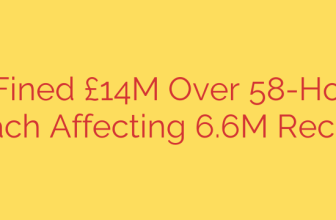
The Rise of Vishing: A New Frontier in Brand Impersonation and How to Stop It
In today’s digital landscape, trust is the most valuable currency a brand can have. Unfortunately, sophisticated criminals are finding new ways to exploit that trust, moving beyond traditional email phishing to a more direct and personal form of attack: voice phishing, or “vishing.” These phone-based scams are designed to impersonate your brand, trick your customers, and cause significant financial and reputational damage.
Phone scams aren’t just a nuisance; they are a direct assault on your brand’s integrity. By hijacking your company’s good name, scammers manipulate customers into handing over sensitive information, from passwords and two-factor authentication (2FA) codes to bank account details. Understanding this evolving threat is the first step toward building a robust defense.
From Text Message to Financial Theft: The Vishing Playbook
Modern phone scams are rarely just a cold call. They are multi-stage attacks that create a powerful sense of urgency and legitimacy. Here’s how a typical vishing scheme unfolds:
- The Bait: The attack often begins with an SMS message (smishing) or a phishing email. This initial message is designed to alarm the recipient, often containing a warning like “Suspicious login attempt detected” or “Your recent payment has been declined.”
- The Hook: Instead of a malicious link, the message instructs the victim to immediately call a provided phone number to resolve the issue. This number, of course, is controlled by the scammer.
- The Impersonation: When the victim calls, they are connected to a criminal posing as a legitimate customer service agent from your company. This person sounds professional, helpful, and is prepared with a script to sound convincing.
- The Theft: Under the guise of “verifying their identity” or “canceling a fraudulent transaction,” the scammer extracts the victim’s login credentials, security codes, or personal financial information.
This method is dangerously effective because it combines the immediacy of a text alert with the perceived legitimacy of a phone conversation. Customers believe they are proactively protecting themselves, when in reality, they are walking directly into a trap.
A Proactive Defense: Disrupting Scammers at the Source
Reacting to these scams after the damage is done is not enough. The key to protecting your customers and your brand is to disrupt the criminal infrastructure before it can claim more victims. A groundbreaking new approach is emerging that actively targets and neutralizes the phone numbers used by scammers.
This strategy works by overwhelming the scammer’s phone line with a flood of automated, time-wasting calls. By making it impossible for real victims to get through, the fraudulent number becomes useless to the criminals.
Here’s how this powerful disruption technology works:
- Rapid Detection: Fraudulent phone numbers used in phishing and smishing campaigns are identified as soon as they appear in the wild.
- Automated Call Flooding: Once a number is confirmed as malicious, a global network begins placing thousands of automated calls to it. These calls are designed to tie up the line indefinitely.
- Wasting Scammer Resources: The calls don’t just block the line; they are designed to waste the scammer’s time. Using sophisticated voice synthesis, the system can engage the scammer in pointless conversations, draining their resources and preventing them from targeting actual victims.
- Incapacitating the Operation: By rendering the phone number useless, the entire scam campaign connected to it is effectively shut down. This forces the criminals to abandon their infrastructure and start over, significantly reducing the lifespan and profitability of their operation.
This active disruption provides an immediate and powerful defense, protecting customers in real-time and severely impacting the criminals’ ability to operate.
Actionable Security Tips for Businesses and Consumers
While disruptive technology provides a powerful new weapon, a comprehensive security strategy requires vigilance from both companies and their customers.
For Businesses:
- Educate Your Customers: Regularly inform your customers about the types of scams targeting your industry. Clearly state that you will never ask for passwords, full credit card numbers, or 2FA codes over the phone.
- Establish Clear Communication Channels: Ensure your official phone numbers are easy to find on your website. Advise customers to only use these verified numbers and to be wary of any number provided in an unsolicited text or email.
- Invest in Brand Protection: Implement services that actively monitor for and take down phishing sites, fraudulent social media profiles, and malicious phone numbers associated with your brand.
For Consumers:
- Be Skeptical of Unsolicited Messages: Treat any urgent security alert from a text or email with caution. Scammers rely on you to panic and act quickly.
- Never Use Contact Info from a Suspicious Message: If you receive an alert, do not call the number or click the link provided. Instead, go directly to the company’s official website or use a phone number from a previous bill or statement to contact them.
- Guard Your Information: Never provide passwords, PINs, or one-time security codes to someone who has called you, or who you have called from an unverified number. Legitimate companies will not ask for this information.
- Report Suspicious Activity: If you receive a phishing text or suspect a phone scam, report it to the company being impersonated and to the relevant authorities.
As criminals innovate, so too must our defenses. By combining proactive disruption technology with ongoing education and vigilance, we can create a safer environment for customers and protect the hard-earned trust that defines a brand.
Source: https://www.helpnetsecurity.com/2025/10/15/netcraft-phone-scam-disruption/








